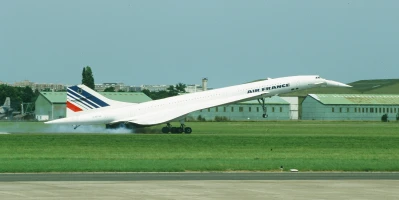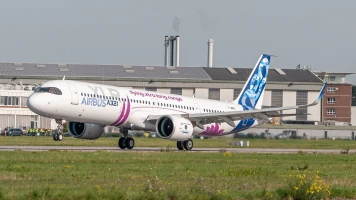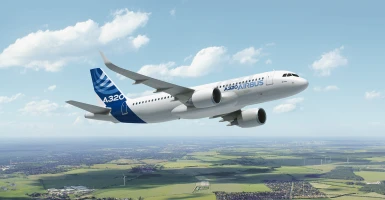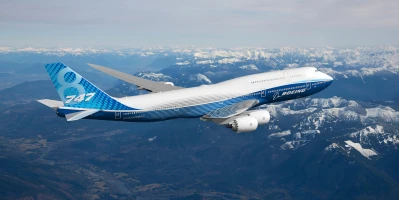good-to-know
A brief guide: Supersonic flight without the boom
Supersonic flight without the boom? Coming right up—either through ingenious aerodynamics or with the help of Mach cutoff, a sophisticated physical effect.
author: Andreas Spaeth | 5 mins reading time published on: 08.05.2025
author:
Andreas Spaeth
has been traveling the world as a freelance aviation journalist for over 25 years, visiting and writing about airlines and airports. He is frequently invited to appear on radio and TV programs to discuss current events in the sector.
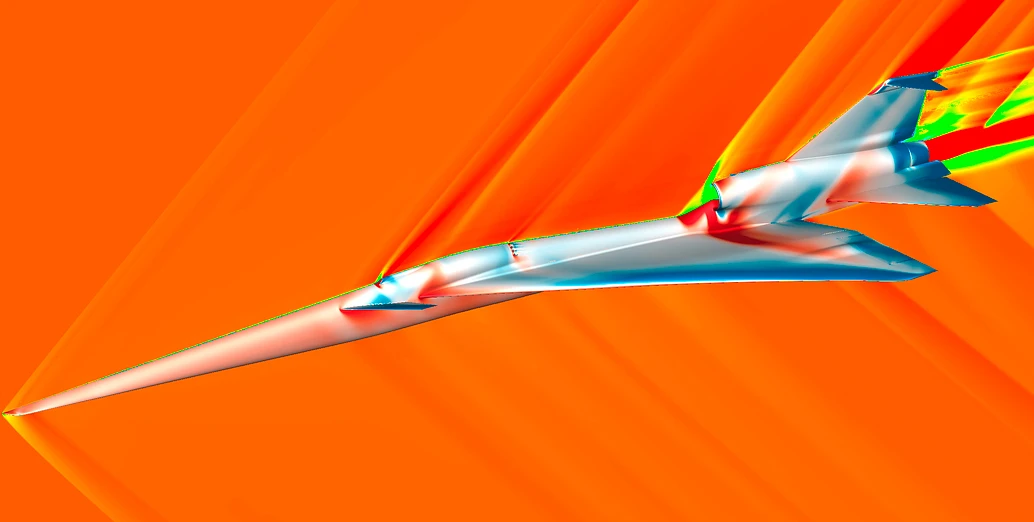
©NASA / James C. Jensen
You may also be interested in following content
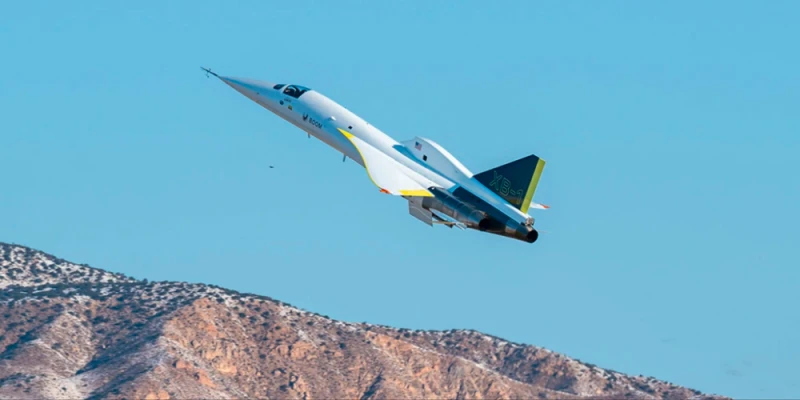
Dawn of a new supersonic era
Humans broke the sound barrier for the first time in 1947. The Concorde was retired in 2003—but supersonic passenger flights could return as soon as 2030.
What causes the sonic boom?
When an aircraft flies at less than the speed of sound, the sound it generates spreads evenly in all directions in the form of waves. This threshold, which depends on the environment but is generally around 1,200 kilometers per hour, is referred to as Mach 1. As the aircraft approaches this speed, the sound can no longer propagate forward. Instead, it builds up as a pressure wave in front of the aircraft. The sound waves coalesce into what is known as the sound barrier. This acts like a solid body, as the air ahead of the aircraft can no longer equalize pressure differences. Once the aircraft reaches supersonic speed, it breaks through this barrier.
As the aircraft passes through this air mass, a shock wave appears at its nose and spreads out behind the jet in a funnel shape. Wherever this shock wave hits the ground, it is perceived as a loud boom of up to 120 decibels—close to the human pain threshold of 130 decibels. The passengers on board don’t notice the boom, because they are traveling faster than the sound itself. Often, a second boom can be heard at ground level shortly after the first. This is because shock waves are generated not only at the aircraft’s nose but also at its tail. Depending on how far away the aircraft is from the listener, they will hear a double boom.
How can Mach cutoff prevent the boom?
Mach cutoff is a physical phenomenon that causes sound waves to refract and bend back up into the atmosphere, away from the ground. This means a supersonic aircraft emitting sound waves in flight that would normally be audible as a boom on the ground can pass overhead without any noticeable effect for humans. To do this, the aircraft must adapt precisely to the prevailing conditions of the area it is overflying. Blake Scholl, CEO of Boom Supersonic, explains: “Just as a beam of light refracts when passing through a glass filled with water, sound waves will also change direction depending on which layers of air they’re traveling through and how the speed of sound varies there.”
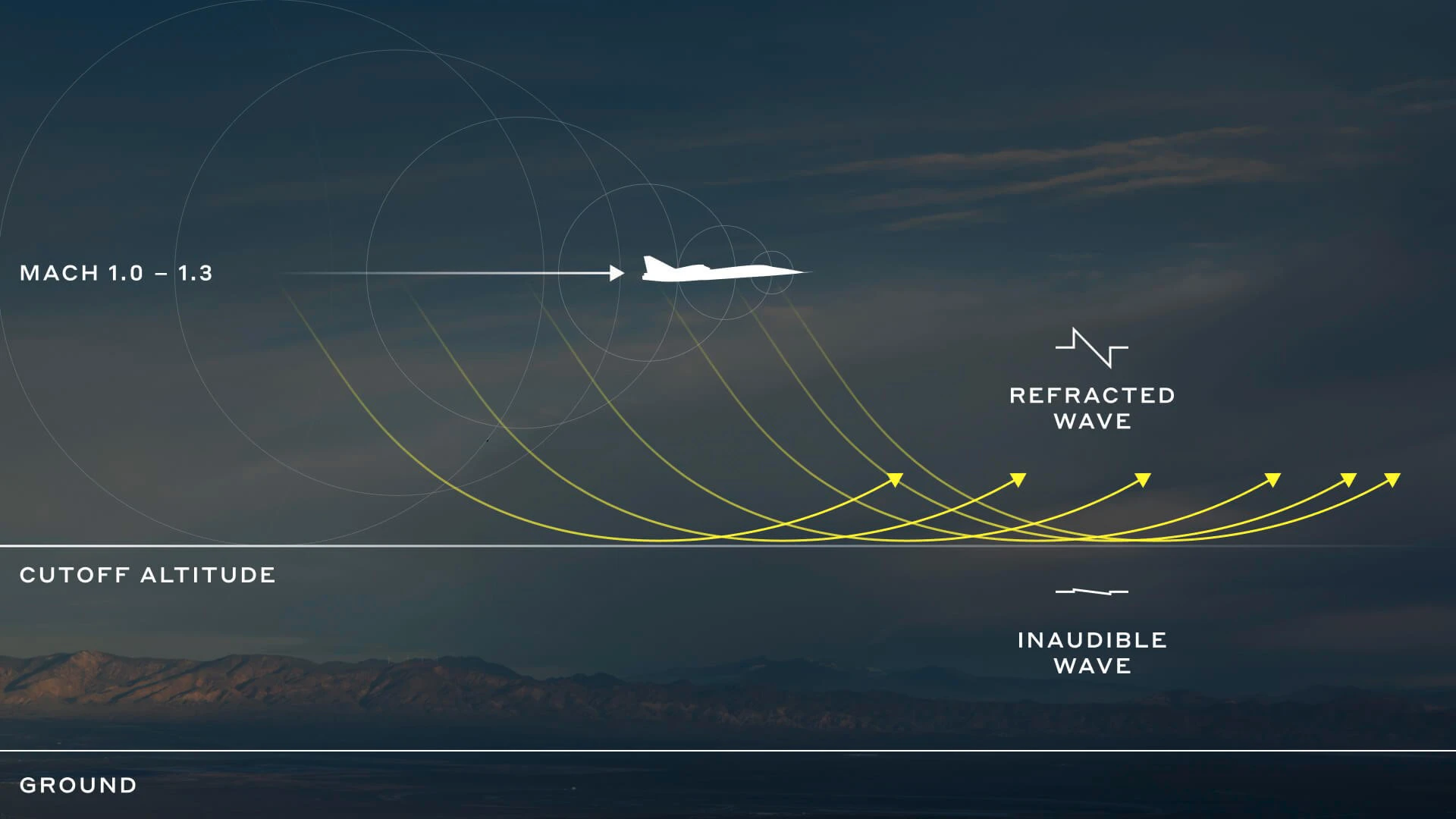
©Pennsylvania State University Acoustical Model of Mach cutoff Flight
©Pennsylvania State University Acoustical Model of Mach cutoff Flight
The speed of sound depends largely on the temperature—and this decreases with increasing altitude. In colder air, sound waves refract and bend back upward, forming a U-shaped trajectory that keeps the sound away from the ground. “How high up this U is depends on several factors,” Scholl says, “including the airspeed, the temperature gradient in the atmosphere, and the prevailing wind conditions.”
The key factors here are the atmosphere and the nature of the terrain. “The aircraft’s cruising speed must be constantly adjusted so that the sonic boom waves don’t extend below a desired height—the cutoff altitude,” says Bernd Liebhardt, a scientist at the German Aerospace Center (DLR) in Hamburg who studies commercial supersonic flight. Achieving what the company calls “Boomless Cruise” is certainly within reach:
“It will always work, provided you have the exact weather data, precise ground contours, an exact calculation of the maximum possible flight speed, and precise flight control,” Liebhardt says. “Today’s technologies make the combination of these capabilities achievable at reasonable effort.” The maximum possible airspeed for Mach cutoff is Mach 1.3, but depending on the weather conditions it will usually lie in a range between Mach 1.1 and 1.2 (1,358 and 1,481 km/h).
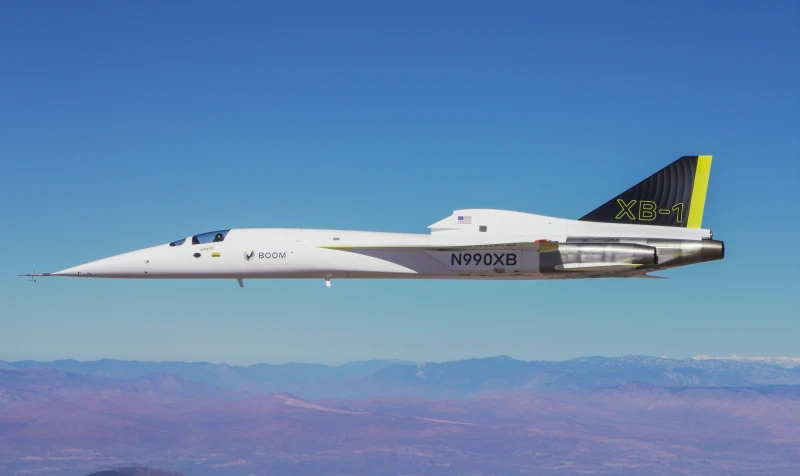

©Boom Supersonic


©Boom Supersonic
A small sensation occurred here on January 28, 2025: the Boom XB-1 single-seater test aircraft managed to break the sound barrier several times, reaching a top speed of Mach 1.18.
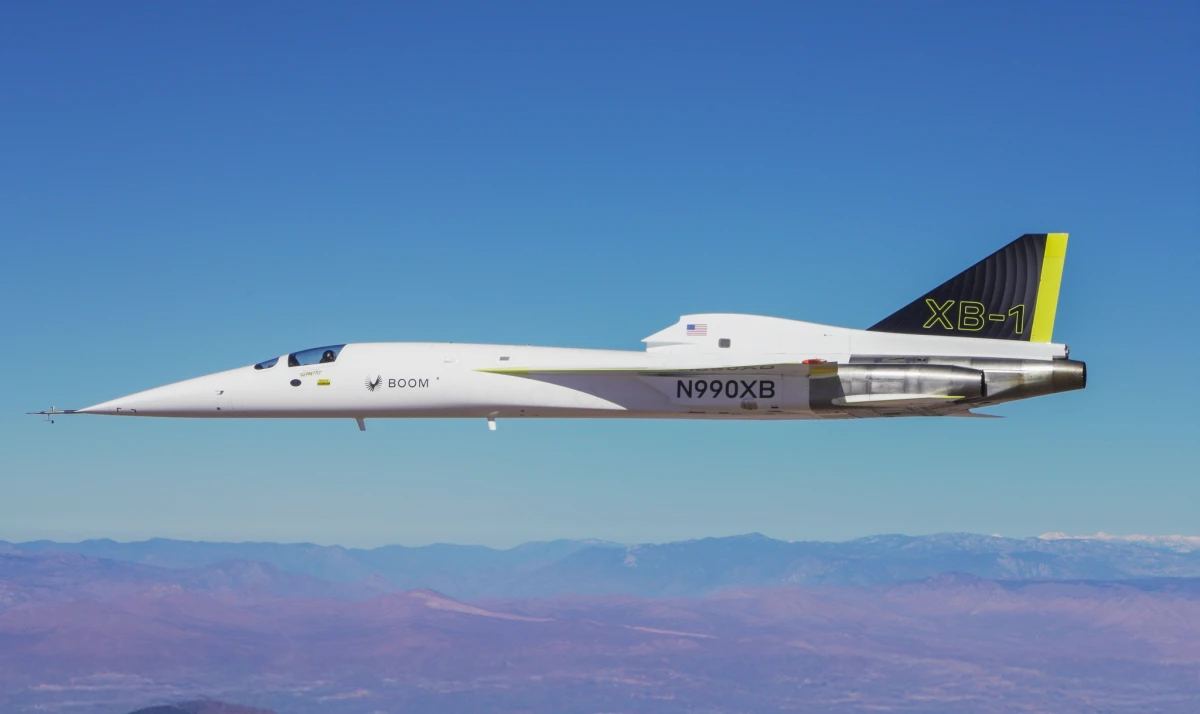
©Boom Supersonic
Can Boomless Cruise work for supersonic passenger jets?
The XB-1, Boom Supersonic’s test aircraft, proved for the first time in January 2025 during test flights over the Mojave Desert that Mach cutoff, and thus Boomless Cruise, works. So far, however, this has been shown only for shorter flights over land, where the capacity for boomless flight is also crucial. The only way speeds can be increased from today’s Mach 0.94 to anywhere up to Mach 1.3 in the future is if there is no boom. “But in this speed range, air resistance and hence fuel consumption are at their highest,” Liebhardt points out.
Over water, where the vast majority of Boom’s long-haul flights will spend most of their time, the sonic boom is irrelevant, so its Overture jet will be able to fly at Mach 1.7. Over land, the availability of correct algorithms and real-time atmospheric data is a crucial prerequisite for boomless flight. The data obtained from the XB-1 test flights should make it possible to program the Overture’s autopilot in such a way that the aircraft automatically flies within the optimum parameters—and without the boom.
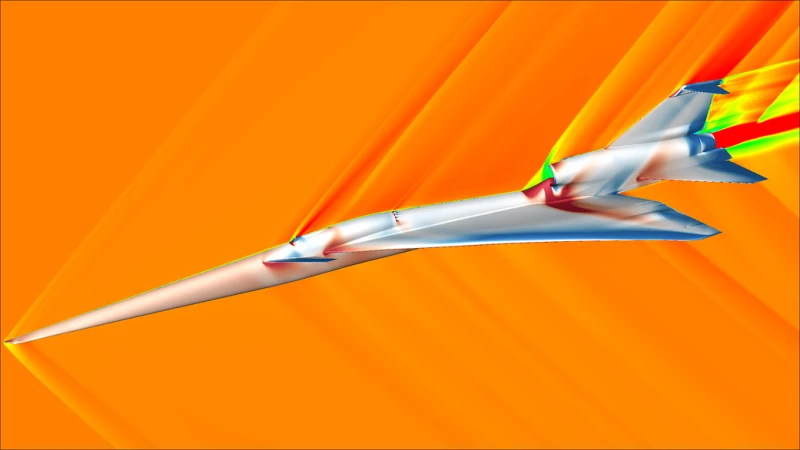

©NASA / James C. Jensen


©NASA / James C. Jensen
This image captures a moment from a computational fluid dynamics simulation of the X-59 aircraft concept during supersonic flight. Visualizations like this help researchers determine which surface features of the aircraft are generating shockwaves, which contribute to the sonic boom noise below the aircraft. The colors shown on the aircraft indicate surface pressure, with lower pressures in blue and higher pressures in red. The colors shown in the airspace surrounding the aircraft indicate airflow velocity, ranging from blue, indicating zero velocity to higher velocities in red.
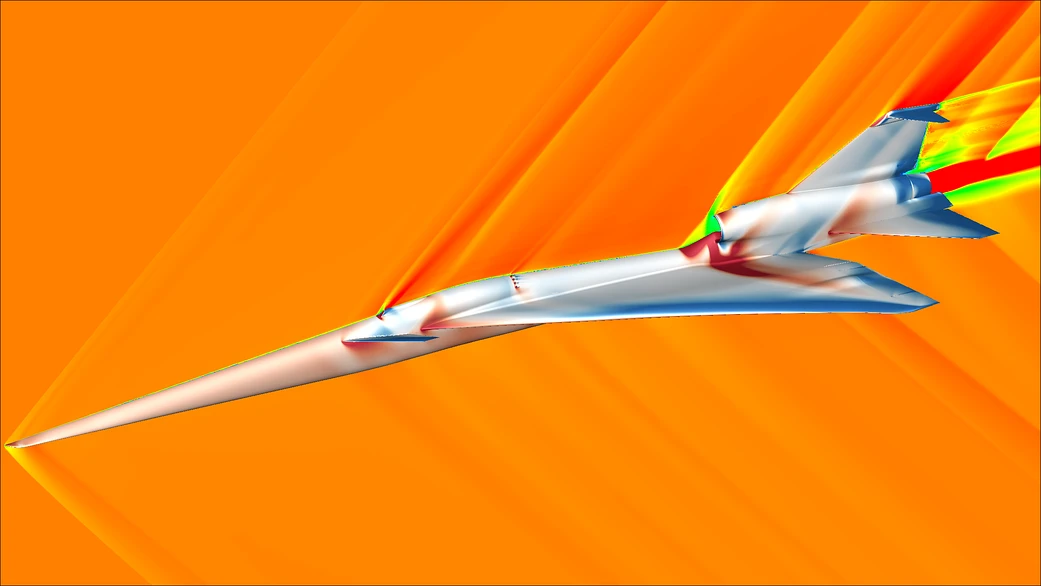
©NASA / James C. Jensen
The quiet supersonic aircraft as an alternative: What about the design?
NASA is taking a different approach to making supersonic flights over land acceptable. As part of its QueSST (Quiet SuperSonic Technology) research project, NASA will fly the X-59 test aircraft, built by Lockheed Martin, over populated areas of the United States as early as 2025 to determine people’s reactions. (See interview "Research on how to achieve a quieter sonic boom") Unlike Boom, NASA isn’t relying on physically redirecting the sonic boom back into the atmosphere, but rather on giving the aircraft a particularly low-noise design.
This principle is called low-boom technology. Almost half the X-59’s 30.4 meter length is accounted for by the extremely elongated, flattened “Pinocchio nose,” as pilots call it. The unusual shape of the fuselage nose, and indeed of the entire delta-wing aircraft (wingspan nine meters) with its T-tail and canard foreplanes, was a deliberate choice intended to greatly weaken the shock waves that are responsible for the sonic boom. While the test aircraft’s shape can’t completely prevent the boom—this is physically impossible—it can muffle it considerably. As a result, when what’s left of the boom reaches the ground, it should be no louder than a slamming car door, meaning it has much less of an impact on people and objects.
“The X-59 makes sense insofar as it demonstrates that the sonic boom can be reduced even at higher supersonic cruising speeds,” Liebhardt says. “It examines how an actual technology, namely the aircraft’s exterior design, can shape the sonic boom and make it more bearable.”
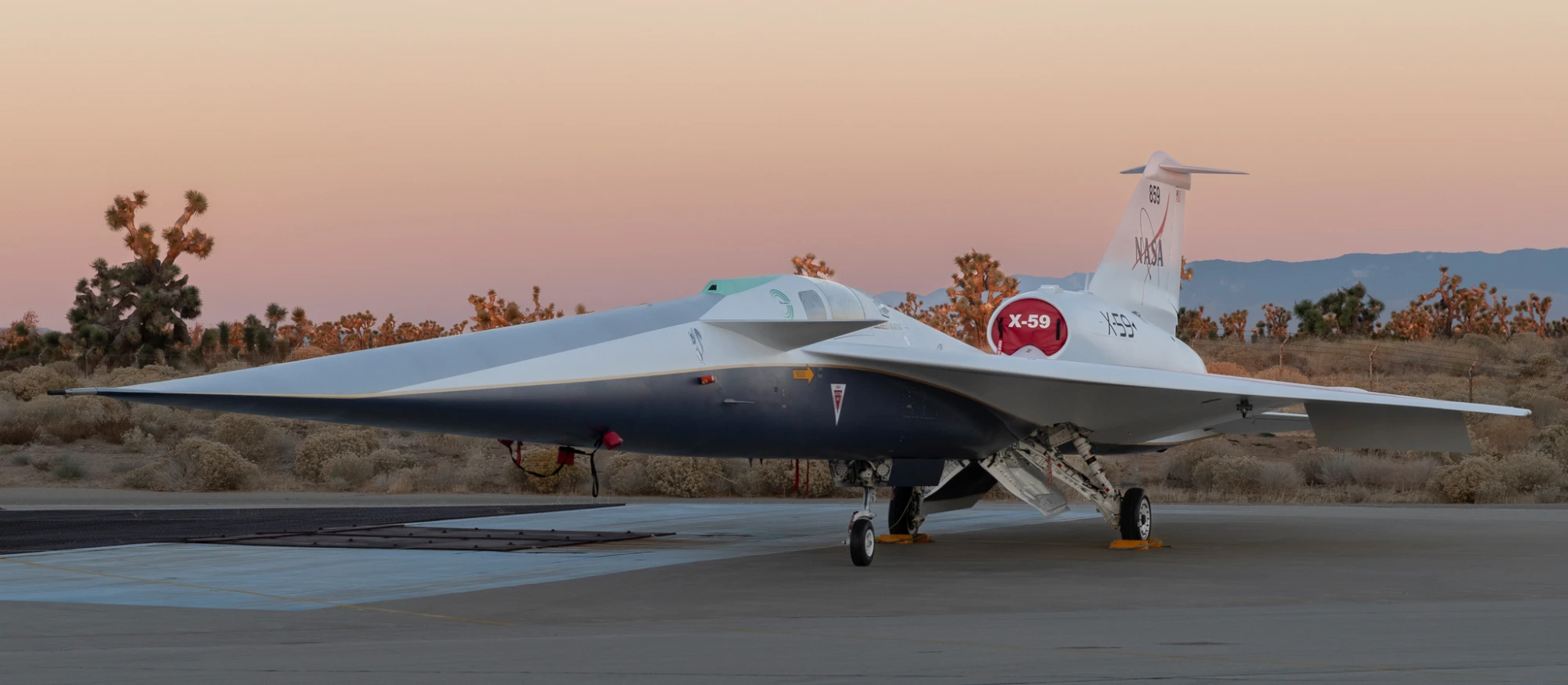
©NASA/Steve Freeman
©NASA/Steve Freeman
NASA’s X-59 quiet supersonic research aircraft was built to demonstrate the ability to fly supersonic, or faster than the speed of sound, while reducing the typically loud sonic boom produced by aircraft at such speeds to a quieter sonic “thump”.
Is supersonic flight over land about to make a comeback?
Even before the Concorde took to the skies, supersonic flights over land were banned worldwide in the early 1970s. The ban is still in place today—and this fact severely limits the possibility of future supersonic flights. What led to the ban was the loud sonic boom—and its harmful effects on people and objects. If it should now prove possible to prevent, or at least greatly reduce, the boom at ground level, this could remedy the situation.
Liebhardt certainly believes the potential is there: “In the hypothetical case that supersonic flights over land were permitted, our studies show that the potential market for supersonic airliners would double and would likely trigger serious development projects.” Boom Supersonic is already talking about 600 possible supersonic routes worldwide if the ban is lifted.



